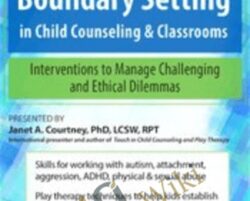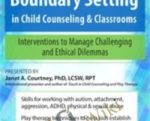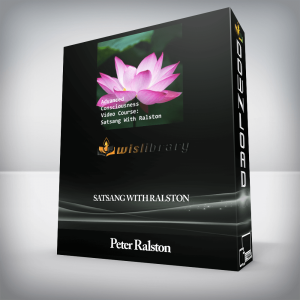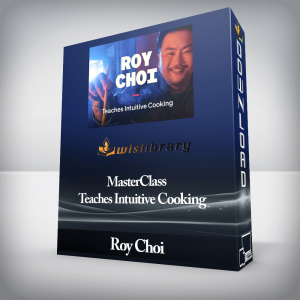Skills for working with autism, attachment, aggression, ADHD, physical & sexual abusePlay therapy techniques to help kids establish healthy boundariesProfessional and legal boundaries around safe physical contact in therapyTouch best-practice guidelinesTouch in therapy with children has long been a taboo topic and a hotbed of controversy!We, as practitioners and educators, are challenged daily with ethical and clinical/ educational dilemmas related to touch from a child’s request for a hug, to a child inappropriately touching, to physical acts of aggression.Join Janet Courtney, PhD, LCSW, RPT and leading expert in the field of touch, in this ground-breaking workshop. You will learn the current research related to the neurobiology of touch and attachment, plus the varied mediating factors that impact child initiated verses practitioner/educator initiated touch.Discover varied touch-informed play therapy approaches that ethically intervene with child problems and diagnoses related to trauma, sexual and physical abuse, domestic violence, ADHD, anxiety, and attachment.You’ll walk away with new interventions to successfully manage in-the-moment challenging touch behaviors, as well as play therapy-based techniques to help kids and teens establish healthy touch boundaries. Increase your professional awareness and competency through lab activities, and clinical and ethical touch guidelines to immediately lower concerns of liability.Administer at least 10 “mediating factors” related to touch and how they interrelate to determine best practice interventions.Explore the varied play therapy models that use touch as an intervention.Characterize at least seven interventions to educate children regarding safe touch boundaries and body awareness.Determine 10 recommended clinical and ethical touch guidelines in child counseling and play therapy practice.Propose why increasing professional touch awareness is crucial to an individual’s professional development especially when working with abused children.Intervene to educate parents and caretakers about the neurobiology of touch and its relationship to attachment and self-regulation.Specify at least three play therapy touch educator interventions that assist children setting personal space boundaries.Breaking down the Touch ControversyWhy the problem with touch & children?Touch with children vs adults“No touch” policies—More harm than good?Touch and your code of ethicsMale vs female practitioner liabilityExamining the “slippery slope” argumentCurrent researchNeurobiology of TouchOxytocin—the “calming & connectivity” hormoneCortisol & hurtful or stressful touchParasympathetic nervous system (PNS)C-tactile fibers—Emotional touchSensory mirror neurons – develop empathy and interconnectivityPsychoeducationAssessing Mediating Factors of TouchTypes of touch: child initiated, practitioner initiated, task-oriented, referential…Child’s age, gender, diagnosisTheoretical approachCultural, religion, and more…Case Examples/Ethical Dilemmas – Respond, Intervene & Set Safe Boundaries in Clinics/ClassroomsRecommendations for working with physically & sexually abused children—attunement/ proximity/cuesAlternatives to physical restraint – interventions for physically aggressive kids/teensSkills for working with children diagnosed with autism, reactive attachment disorder, ADHD (attunement/proximity/cues)Child Restraint—informed consent sampleManaging inappropriate touching by the childDevelopmental differences: infants, children, teensPlay Therapy & Assessments – Touch as an InterventionDevelopmental play therapy—touch and attachment disordersDIR/floortime and children with autismFirstPlay®–facilitating corrective (and preventive) experiences of touch between infants and parentsTouch in animal assisted therapyPeer-to-peer massage in schoolsTouch in groups: dance & movement/bereavement/play therapyCase ExamplesLab Experiential—Growing Professional Self-AwarenessKnowing your own proximity space boundaries & comfortSide hugs & acceptable touch alternativesPractice setting appropriate boundaries with childrenProfessional touch survey small group discussionPractice boundary setting interventions—through mock demonstrationsBecome a “Touch Educator” with Creative Play-Based Interventions“Captain May I”‘Red Light, Green Light’Hula hoop Personal Space“My No Touch Square!” chant activityCreating safe boundaries in the sandtray & clayCase study examples to apply to practiceGrowing Ethical Competency in TouchAristotle’s “Practical Wisdom”5 core competencies in touchClinical & ethical touch guidelinesLiability risk management— informed consentTag: Touch and Boundary Setting in Child Counseling & Classrooms: Interventions to Manage Challenging and Ethical Dilemmas – Janet Courtney Review. Touch and Boundary Setting in Child Counseling & Classrooms: Interventions to Manage Challenging and Ethical Dilemmas – Janet Courtney download. Touch and Boundary Setting in Child Counseling & Classrooms: Interventions to Manage Challenging and Ethical Dilemmas – Janet Courtney discount.
 All Access Pass 2021 – Unlimited Learning Buffet! – Dr. Richard Nongard
₹65,570.00
All Access Pass 2021 – Unlimited Learning Buffet! – Dr. Richard Nongard
₹65,570.00
 The Anabolic Diet – Mauro DiPasquale
₹5,478.00
The Anabolic Diet – Mauro DiPasquale
₹5,478.00
Touch and Boundary Setting in Child Counseling & Classrooms: Interventions to Manage Challenging and Ethical Dilemmas – Janet Courtney
₹12,450.00





